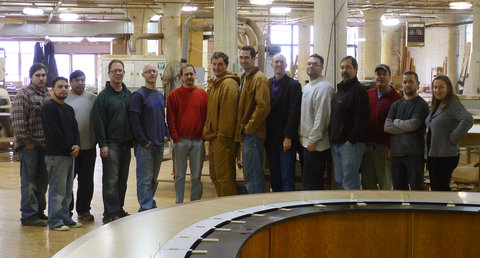Thinking Entrepreneur
An owner’s dispatches from the front lines.
I have a friend who has an 18-year-old son. He is a big kid, with a friendly disposition and a kind and respectful demeanor. He has a very good part-time job at a respected restaurant in an affluent suburb of Chicago. He works at the carryout counter where he reviews customer orders, asks the customers if there is anything else he can get for them, and then asks if they need help carrying their food to their cars. He has worked there for more than a year, and I’m sure the training and support he has received will serve him well in future jobs.
Recently, I happened to ask his mother how the job was going, and she gave me a disappointing report. Last week, she said, a customer came in to pick up an order, looked at her son and asked him to say, “What’s happening!”
Did I mention that the young man is African-American? And for those too young to remember, there was a well known character on a 1970s sitcom called “What’s happening,” who was black and obese, wore a red beret and suspenders, and would go around saying, “What’s happening!” His name was Rerun, and he was played by an actor named Fred Berry.
Now some of you may think, “What’s the big deal?” — but I hope not many. To most people, this is offensive, and whether you consider it stereotyping, ignorance or racism doesn’t matter. What does matter is that this teenager went home, related the story to his mother and cried. He doesn’t understand why someone would ask him to do that, as if he is there for their amusement.
But here is the worst part, the part that makes me sick as a boss, as a father and as a friend. He felt obligated to say the line, because he was trained to take care of customers, to do whatever he has to do. His mother told him that he should have said, “I’m not really comfortable with that.” And that is certainly a better answer than I came up with. But her son is not sure what the company would think of that response.
And I understand why he feels that way — even though I happen to know the owner of the company, and I am pretty sure he would be horrified to hear the story. I believe the owner would give him advice similar to his mother’s.
This is not the only uncomfortable situation he encounters. His mother tells me that about once a week, after he reviews an order with a customer in his charming and pleasant manner, and leaves the room (but remains within earshot), a white customer will say to the white cashier something like, “He’s so nice! I didn’t expect that.”
I’m not sure what’s worse, thinking it or saying it. But I’m very sure the cashier is uncomfortable, and I’m pretty sure these customers are clueless about what they are doing. Granted, no one is getting shot, pulled over or accused of a crime, but there is damage done. I asked his mother what she says to him when this happens? She said she tells him that there is racism in the world and that it will always be there. I cringed. I asked if she was sure it was racism and not ignorance. She said it really didn’t matter — it hurts either way. She said that for the first 14 years she did say it was ignorance, but at some point she got tired of defending ignorance and painting a rosy view of her world. It gave me a different perspective.
As a boss, I believe I have a responsibility to make sure my employees understand the difference between dealing with an angry customer and dealing with abusive behavior — or perhaps in this case, ignorant and rude customers. The white cashier could ask “Why would you be surprised?” This might actually do the customer a favor. As for the “what’s happening?” customer, I’m sure that he’ll be back, and I’m sure he will do it again — because he probably thinks he’s being funny and friendly. I am hoping my friend’s son will muster the nerve to say, “No, I’d rather not.” I think he needs to speak with his boss.
What would you tell your employee?
Jay Goltz owns five small businesses in Chicago.
Article source: http://boss.blogs.nytimes.com/2013/07/22/when-the-customer-is-not-right/?partner=rss&emc=rss



